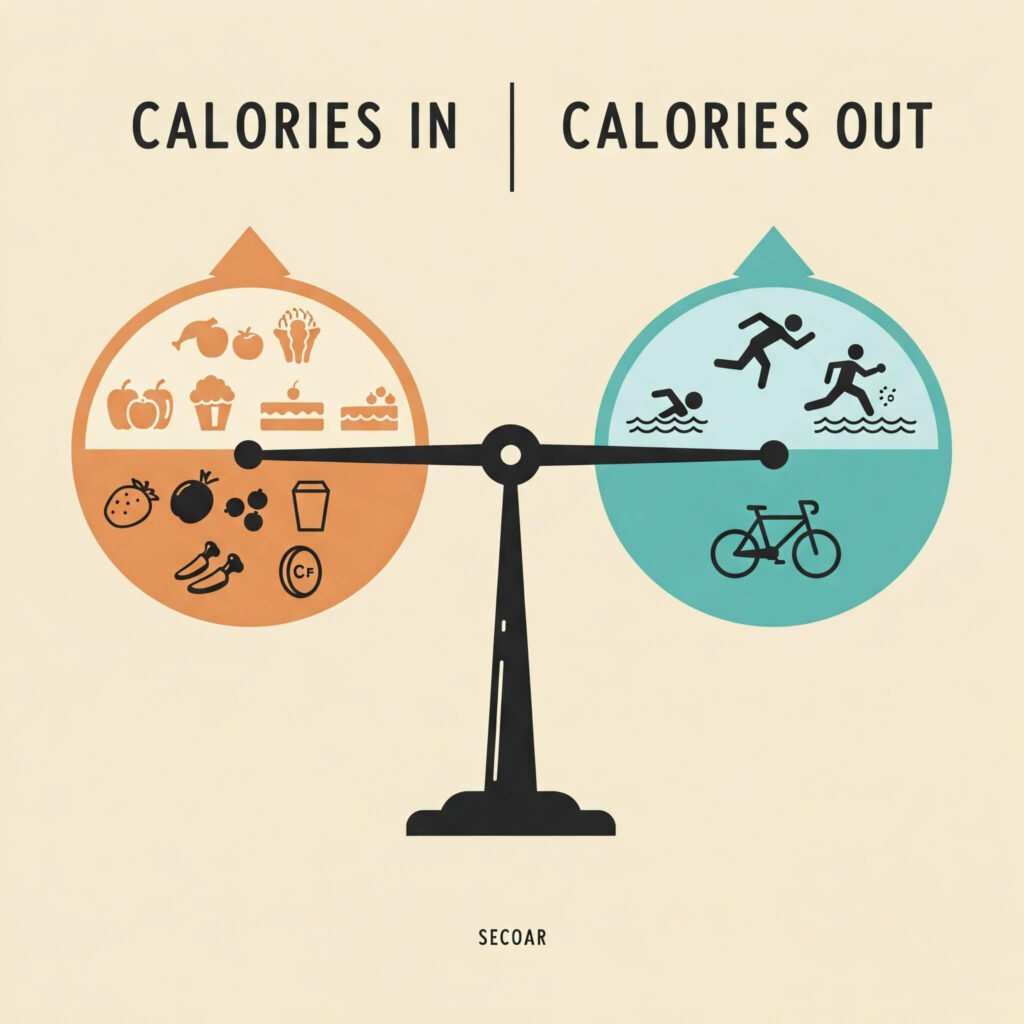Want to lose weight without complicated diets? The secret lies in learning how to create a caloric deficit—burning more calories than you consume. This simple approach helps your body use stored fat for energy, leading to sustainable weight loss. In this guide, we’ll show you how to create a caloric deficit with practical, easy-to-follow steps, avoid common mistakes, and build habits for long-term success.
Why a Caloric Deficit Drives Weight Loss
A caloric deficit is the cornerstone of weight loss. When you consume fewer calories than your body needs, it taps into fat reserves for energy. According to the Mayo Clinic, a 3,500-calorie deficit typically results in losing one pound of fat. While individual results vary, creating a caloric deficit is a proven strategy.
To make it work, balance is key. Extreme diets or over-exercising can backfire, so let’s explore sustainable ways to achieve this deficit. Curious about healthy eating to support your goals? Check out our post on building a balanced diet.

3 Simple Ways to Create a Caloric Deficit
You can create a caloric deficit by eating less, moving more, or combining both. Below, we break down each method with actionable tips.
1. Reduce Calorie Intake Smartly
Cutting calories doesn’t mean starving yourself. Focus on choices that keep you full while supporting a caloric deficit. Try these:
- Prioritize nutrient-dense foods: Fill up on vegetables, lean proteins, and whole grains. A chicken and veggie stir-fry is lower in calories than fast food.
- Control portions: Use smaller plates or measure servings. A single serving of rice is about ½ cup cooked.
- Cut liquid calories: Skip sugary drinks like soda or juice. Water or herbal tea is your friend.
- Track calories: Apps like MyFitnessPal help you monitor intake.
Example: Lisa swapped her daily soda for water and reduced her dinner portions, creating a 300-calorie deficit daily. In two months, she lost 5 pounds. Learn more portion control tricks in our guide to mindful eating.

2. Boost Calorie Burn with Exercise
Exercise helps create a caloric deficit while improving your health. Find activities you love to stay consistent. Here’s how:
- Cardio: Running, cycling, or dancing can burn 200-400 calories in 30 minutes.
- Strength training: Building muscle boosts your metabolism, burning more calories even at rest.
- Daily movement: Walk to work, take stairs, or try gardening. Small steps add up.
Pro Tip: Aim for 150 minutes of moderate exercise weekly, per the CDC. Want workout ideas? See our beginner exercise routines.

3. Combine Diet and Exercise
The most effective way to create a caloric deficit is pairing dietary changes with activity. For example:
- Cut 200 calories (e.g., skip a sugary snack).
- Burn 300 calories (e.g., a 30-minute jog).
- Result: A 500-calorie deficit, potentially leading to 1 pound lost weekly.
This approach lets you eat enough to feel satisfied while achieving results. Explore more tips in our weight loss myths debunked.
How to Calculate Your Caloric Deficit
To create a caloric deficit, you need to know your calorie needs and how much to reduce. Follow these steps:
- Find your maintenance calories: Use a Healthline calculator to estimate your Total Daily Energy Expenditure (TDEE).
- Aim for a deficit: A 500-1,000 calorie daily deficit promotes 1-2 pounds of weight loss weekly.
- Monitor progress: Weigh yourself weekly and adjust if needed.
Data Insight: A Journal of Obesity study showed a 500-calorie deficit led to steady weight loss over 12 weeks.
Mistakes to Avoid When Creating a Caloric Deficit
Creating a caloric deficit is straightforward, but missteps can stall progress. Watch out for:
- Cutting too many calories: Eating too little slows metabolism. Stick to a moderate deficit.
- Focusing only on calories: 300 calories of candy isn’t the same as 300 calories of salmon. Nutrition matters.
- Overestimating exercise: Fitness trackers may inflate calorie burn. Don’t eat back all those calories.
- Inconsistency: A caloric deficit works with steady effort. Occasional treats are fine, but stay on track.
Tips for Sustainable Weight Loss
To maintain a caloric deficit long-term, build habits that stick. Here are some takeaways:
- Set realistic goals: Aim for 0.5-2 pounds weekly.
- Meal prep: Plan meals to avoid impulsive eating.
- Stay hydrated: Water curbs hunger and boosts energy.
- Find support: Join a community or share goals with friends.
- Track non-scale wins: Celebrate better energy or looser clothes.
Example: Mark, a teacher, started meal prepping and walking daily. In four months, he lost 15 pounds and felt stronger.
Conclusion: Your Path to a Caloric Deficit Starts Now
Learning how to create a caloric deficit is the simple, science-backed secret to weight loss. By eating smarter, moving more, and staying consistent, you can shed pounds without extreme measures. Start today: calculate your calorie needs, make one small dietary change, and add a 20-minute walk. Your healthier self is waiting!
































